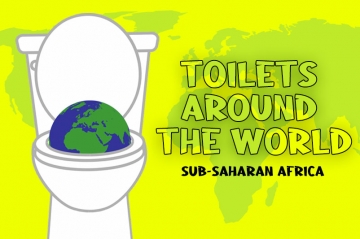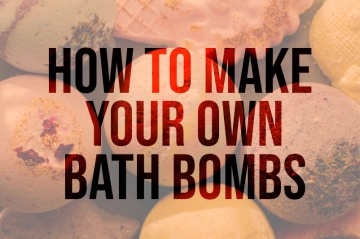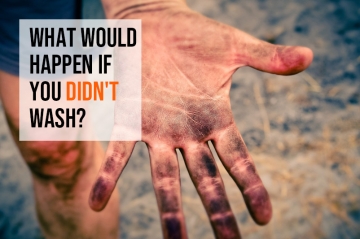History of Toilet Paper
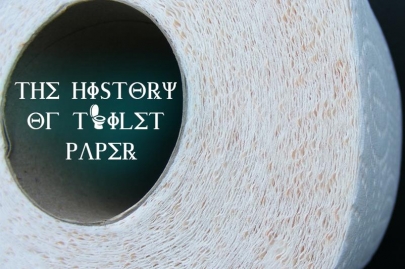
The History of Toilet Paper
It's easy to forget about toilet paper when thinking about bathrooms, though it's usually near the top of anybody's shopping list. A roll of toilet tissue is something that is usually kept out of sight and mind, shut away in a bathroom cabinet or under the stairs until it's moved to the holder, ready for use. Toilet tissue may lack the aesthetic beauty of a shower enclosure or a new LED mirror but it's impossible to live without. It's also difficult to imagine a time without toilet paper but what we now think of as toilet roll is a relatively recent invention. This is a brief history of toilet paper.
The Origins of Toilet Paper
The early years of people cleaning themselves after using the bathroom were all about improvisation. Anything close to hand was a potential paper substitute, whether it was grass, moss, leaves, hay, wool from sheep or any number of other materials. In Ancient Greece, stone and clay were used while the Romans were ahead of the curve thanks to a combination of sponges and salt water.
The first instance of something resembling modern toilet paper came in China in the 6th Century. Later, in 851, an Arab traveller to China wrote that the his hosts 'do not wash themselves with water when they have done their necessities; but they only wipe themselves with paper.' However, it would not become widespread in the west for another thousand years. With the invention of the printing press in the 1400s and its growth in popularity in the following centuries, newspapers and pages from unwanted books became marginally less unpleasant alternatives to foraged leaves.
The Dawn of Toilet Paper
The birth of a modern paper produced and sold with the aim of toilet use is a far more recent event. In 1857, American Joseph Gayetty, a New York businessman, began selling sheets of manila hemp infused with aloe, packaging them in containers akin to modern tissue boxes. Gayetty claimed these sheets helped prevent hemorrhoids (given that aloe is still used in many tissues and other treatments today, he might have been right) and had his name printed on every sheet as a mark of his pride.
Despite these sheets being a significant leap forward in wiping technology, it was difficult to break people from their existing habits. Free pamphlets and catalogues provided a cheaper alternative to Gayetty's product and remained a more popular choice. The Sears catalogue even featured a hole in the top left corner, allowing people to hang it conveniently from a nail in their outhouse and ensure that it was always nearby.
The next significant American innovation came in 1890, when brothers Clarence and E. Irvin Scott marketed the first toilet paper roll. They found more success than Gayetty thanks to negotiating trade deals with several hotels and local shops, Despite the steady income they generated, the brothers struggled to sell their toilet paper to the wider population; many Americans were too embarrassed to purchase it in public. Clarence and E. Irvin didn't publicly acknowledge their invention for another twelve years, eventually taking credit in 1902.
The Rise of Toilet Paper
The rise in popularity of toilet paper was connected to the constant population growth in cities and advancements in plumbing. As apartment buildings increased in size and more and more toilets were moved indoors from outhouses, the continued use of leaves and moss became impractical. Early flush toilets couldn't cope with the demands of removing the thicker paper used in leaflets, catalogues and newspapers.
The advantages of tissue paper, designed specifically for use in bathrooms and more suitable for flushing, became increasingly obvious and the early decades of the Twentieth Century saw a rapid swell in its use. Toilet paper companies made the most of this by bragging in adverts that their products were endorsed by both doctors and plumbers.
Clever advertising offered customers ways to avoid addressing the function of the paper they were buying. In the 1930s, the Hakle company in Germany encouraged the public to ask for their product specifically so they wouldn't need to say “toilet paper”. Meanwhile in America, Charmin decided to improve their attractiveness to customers with a logo of a beautiful woman, a way of deflecting attention from the true nature of their products.
The introduction of four-roll packs in 1932 was the first time customers were rewarded for buying toilet paper in bulk and was one of the reasons that Charmin were able to survive the Great Depression relatively unscathed. At the time, they were by far the most successful toilet paper brand and they continue to be one of the major names in bathroom hygiene. In the decades since, Charmin's advertising identity has moved away from beautiful women and towards adorable bear cubs and children, a tactic that has served them well.
The Conquest of Toilet Paper
The popularity of toilet paper continued to grow throughout the Twentieth Century and by the 1970s it was a staple of everyday life. The American broadcasting standards agency finally allowed use of the term “toilet paper” on television for the first time. It had previously been considered obscene and broadcasters were required to refer to the item as “bathroom tissue”. (On a similar note, 1960's “Psycho” was the first Hollywood release to depict a toilet being flushed; screen media has long had an uncomfortable relationship with bathroom plumbing.)
In 1973, during a “Tonight Show” monologue, Johnny Carson joked that there was an impending toilet paper shortage. Hysterical viewers took his words seriously and embarked on a paper buying frenzy only comparable to one that precedes a natural disaster. A product that had once been difficult sell to the general public was now impossible for them to live without.
For a more comprehensive history of toilet paper, The Toilet Paper Encyclopedia features a timeline with many more fun facts.
The Planet of Toilet Paper
Today, toilet paper is a billion pound business in the UK and worth more than six billion annually in America. Studies have found that people use an average of about 60 sheets of toilet paper a day, more than 50lbs of tissue paper a year. Online surveys asking which single item people would choose if they were stranded alone an island show that toilet paper tops the list, even more than food. As much as it often goes ignored in day to day life, people consider toilet roll arguably the most important amenity in the modern world.
The spread of toilet paper around the world is a direct cause and effect of the improvement in quality of life. Nations that once had far poorer living conditions, such as Brazil, now have a booming toilet paper trade, a sign that people have both the inclination and, crucially, the money necessary to improve their personal hygiene. Brazil's toilet paper use has doubled in little over a decade. The rise in toilet paper usage is an interesting, if seldom talked about, way of measuring the increasing wealth of a country.
The Future of Toilet Paper
The question now is whether or not toilet paper will continue to be as prominent in the coming decades. As important as it has been for the past century, the humble piece of paper will likely be replaced by a more hygienic solution. This process will likely be encouraged by the issue of deforestation, something that toilet paper has undoubtedly contributed to.
As bidets become more widespread and technology such as automatic driers become more accessible to a wider number of people, it's reasonable to believe that toilet paper will gradually disappear from our bathrooms in favour of a hands-free method of cleaning. The “Washlet”, a toilet that is equipped with both a bidet and air blower, is already popular in Japan and several brands, such as Impey, have begun producing similar models in the west,
Even if this does occur, toilet paper will continue to be important for decades to come, especially in areas lacking plumbing and electricity. Toilet paper is an extremely low-tech way of cleaning ourselves and this is why it's such an important part of our lives, improving the lifestyle and hygiene of billions every day. After all, a bidet won't be much use on a desert island or camping trip but the the trusty roll of toilet paper is a home comfort wherever you find it.
Related Posts
Sometimes the inventions which have had most impact on our everyday lives are the ones which we take the most for granted. Where would we be without the wheel, writing or even the internet? Another invention which we take for granted is the access to toilets and sewerage system, and it's not until you visit other countries which don't come up to Western European standards that you realise just how fortunate we are.
Don't want to have to pay for bath bombs? Here is how you can try and make your own bath bombs to add to your bath.
We are very lucky in the country to have clean running water to enable us to keep clean but what would happen if you didn't or couldn't wash for an extended period of time? We take a look.

